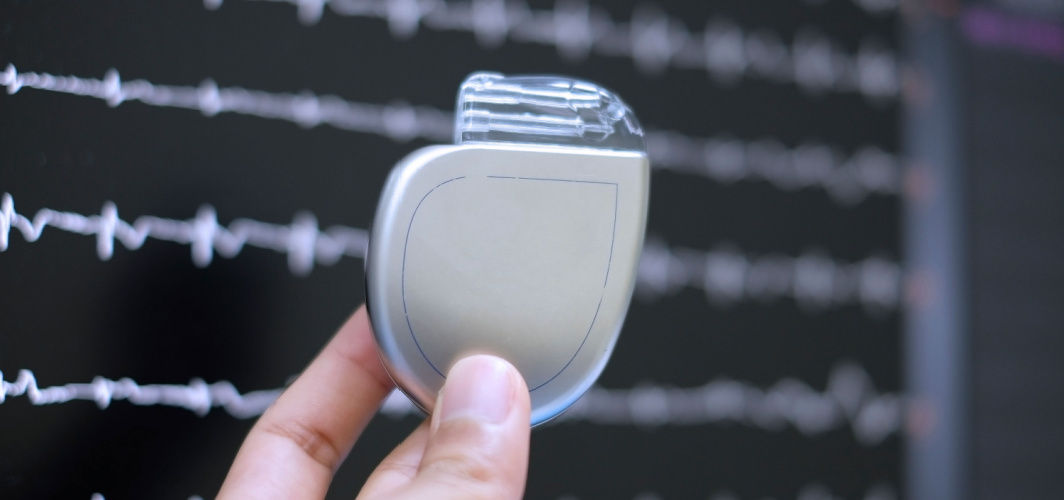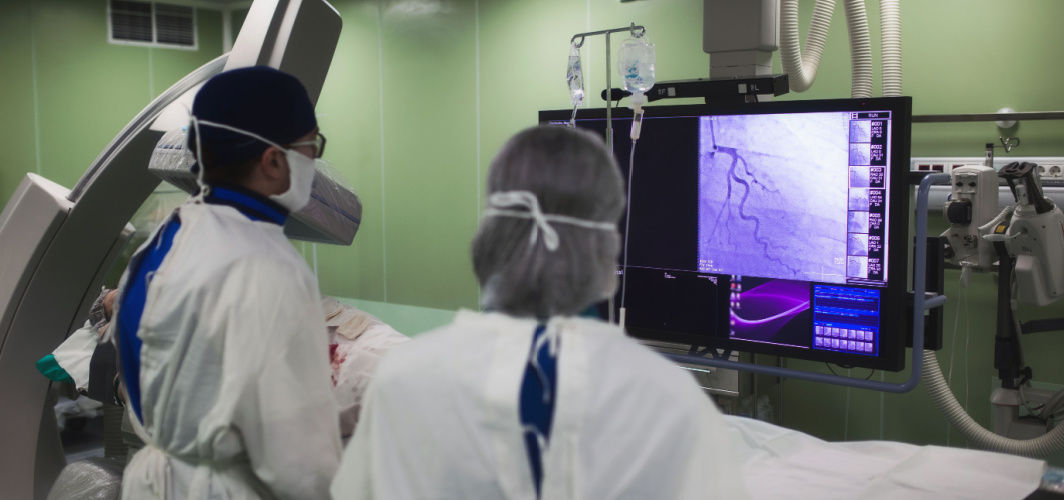Heart Conditions
Pacemaker For Heart: Know The Types And How It Works
3 min read
By Apollo 24|7, Published on - 30 May 2023, Updated on - 16 June 2023
Share this article
0
9 likes

There are more than 3 million people worldwide with pacemakers. Mostly found in elderly people, pacemakers help the heart function normally. Pacemakers are devices that are responsible for generating electrical activity in patients with a slow heart rate, symptomatic heart blocks or heart failure. In this article, we will discuss everything you need to know about pacemakers.
What is a Pacemaker?
Pacemakers are man-made devices placed in the chest, usually through surgery, to support your heart's electrical system. They can help stabilise irregular heart rhythms.
How do Pacemakers Work?
Your heart has a functioning electrical system that enables it to pump blood regularly. When this system suffers a malfunction, your heart’s chamber may either contract (squeeze) in the wrong direction or too weakly, thus failing to provide enough blood to different parts of your body. Pacemakers are responsible for generating these electrical impulses to ensure proper blood supply across the body.
What are the Various Types of Pacemakers?
There are four main types of pacemakers. Each has its own set of functions. They include:
- Single-chamber pacemaker: This is one of the most common types of pacemakers, which uses a single wire that is attached to one of the chambers of your heart.
- Dual-chamber pacemaker: Another common version of a pacemaker, this type uses two wires that are attached to two chambers of your heart.
- Leadless pacemaker: A leadless pacemaker is a small device, usually the size of a pill, that is inserted in your body using a catheter-based procedure. This device is attached to the inner wall of your heart and does not require any wires for functioning.
- Biventricular pacemaker: This particular type of pacemaker uses three wires in total, for functioning. Two of these wires are attached to the lower chambers of your heart. The third wire is connected to the upper right chamber or the right atrium. This process is also termed cardiac resynchronization therapy or CRT.
What are the Various Pacemaker Surgery Procedures?
Depending on the condition of your heart and the type of pacemaker used your doctor will recommend a procedure for the insertion of the device. Advancements in biological sciences have refined these procedures reducing the pain and accelerating recovery. They include:
-
Catheter-based approach: This method usually involves leadless pacemakers that are responsible for treating conditions that affect only one chamber of your heart. The doctor shall insert this catheter into an artery and thread it to your heart.
- Transvenous approach: Mostly used in adults, this procedure involves making a small incision to access a vein near your heart. This is a vein that usually runs underneath your collarbone. The pacemaker itself is placed into a small pocket under the skin of your upper chest.
- Surgical-based approach: In this approach, the surgeon will create a small incision in your chest and attach the lead to the heart. The leads are then connected to the pacemaker, which is placed into a pocket under the skin of your abdomen. Getting a pacemaker can be a stressful event. Therefore, it is advised to talk to your medical provider in the case of any doubts. For more information,
Consult Apollo’s Expert Cardiologists
Medically reviewed by Dr Sonia Bhatt
Heart Conditions
Leave Comment
Recommended for you

Heart Conditions
Know About Echocardiogram: Echo Tests, Procedures, Preparation And Reports
An echocardiogram, also known as an "echo," is a specialised scan that examines the heart and nearby blood vessels. It helps diagnose heart conditions and guides minimally invasive procedures like fixing blocked arteries or replacing faulty valves. Echocardiograms provide crucial information necessary for accurate treatments, leading to improved heart health and patient outcomes.

Heart Conditions
ECG vs Echo: Know the Difference Between Electrocardiogram vs Echocardiogram
Electrocardiogram (ECG) and echocardiogram (Echo) tests are non-invasive diagnostic procedures that aid in diagnosing and managing various cardiac conditions for improved overall heart health. While they sound similar, there are many major differences between the two tests. Read on to explore the distinctions between an ECG and an echo test.

Heart Conditions
Know The Difference Between Angiography And Angioplasty
Angiography and angioplasty are two of the most commonly used procedures to detect and treat heart conditions. Learn about their uses, benefits, risks and how they can help diagnose and treat cardiovascular conditions.
Subscribe
Sign up for our free Health Library Daily Newsletter
Get doctor-approved health tips, news, and more.
Visual Stories

7 Tips to Manage Hypertension
Tap to continue exploring
Recommended for you

Heart Conditions
Know About Echocardiogram: Echo Tests, Procedures, Preparation And Reports
An echocardiogram, also known as an "echo," is a specialised scan that examines the heart and nearby blood vessels. It helps diagnose heart conditions and guides minimally invasive procedures like fixing blocked arteries or replacing faulty valves. Echocardiograms provide crucial information necessary for accurate treatments, leading to improved heart health and patient outcomes.

Heart Conditions
ECG vs Echo: Know the Difference Between Electrocardiogram vs Echocardiogram
Electrocardiogram (ECG) and echocardiogram (Echo) tests are non-invasive diagnostic procedures that aid in diagnosing and managing various cardiac conditions for improved overall heart health. While they sound similar, there are many major differences between the two tests. Read on to explore the distinctions between an ECG and an echo test.

Heart Conditions
Know The Difference Between Angiography And Angioplasty
Angiography and angioplasty are two of the most commonly used procedures to detect and treat heart conditions. Learn about their uses, benefits, risks and how they can help diagnose and treat cardiovascular conditions.
